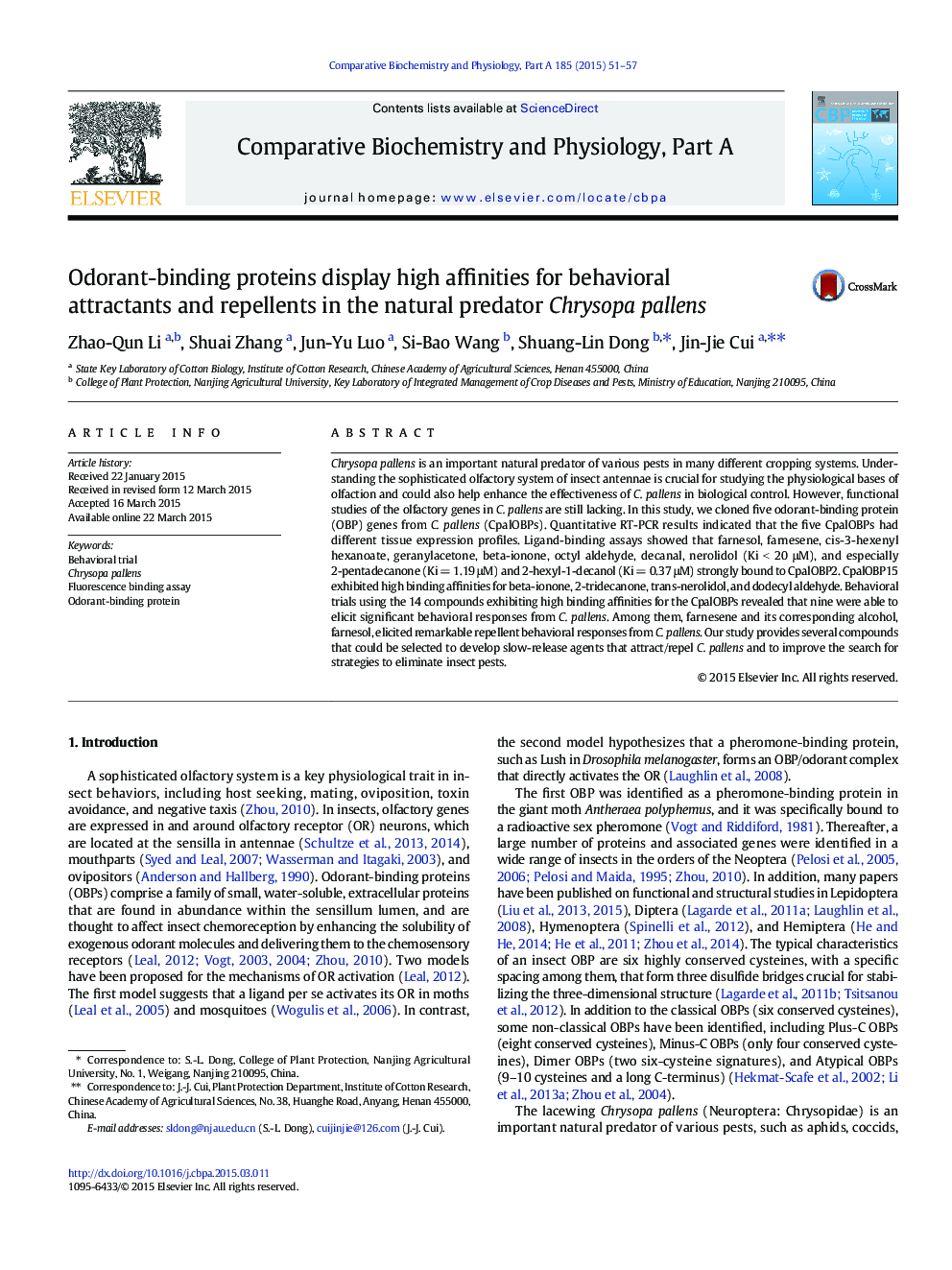| Article ID | Journal | Published Year | Pages | File Type |
|---|---|---|---|---|
| 8318566 | Comparative Biochemistry and Physiology Part A: Molecular & Integrative Physiology | 2015 | 7 Pages |
Abstract
Chrysopa pallens is an important natural predator of various pests in many different cropping systems. Understanding the sophisticated olfactory system of insect antennae is crucial for studying the physiological bases of olfaction and could also help enhance the effectiveness of C. pallens in biological control. However, functional studies of the olfactory genes in C. pallens are still lacking. In this study, we cloned five odorant-binding protein (OBP) genes from C. pallens (CpalOBPs). Quantitative RT-PCR results indicated that the five CpalOBPs had different tissue expression profiles. Ligand-binding assays showed that farnesol, farnesene, cis-3-hexenyl hexanoate, geranylacetone, beta-ionone, octyl aldehyde, decanal, nerolidol (Ki < 20 μM), and especially 2-pentadecanone (Ki = 1.19 μM) and 2-hexyl-1-decanol (Ki = 0.37 μM) strongly bound to CpalOBP2. CpalOBP15 exhibited high binding affinities for beta-ionone, 2-tridecanone, trans-nerolidol, and dodecyl aldehyde. Behavioral trials using the 14 compounds exhibiting high binding affinities for the CpalOBPs revealed that nine were able to elicit significant behavioral responses from C. pallens. Among them, farnesene and its corresponding alcohol, farnesol, elicited remarkable repellent behavioral responses from C. pallens. Our study provides several compounds that could be selected to develop slow-release agents that attract/repel C. pallens and to improve the search for strategies to eliminate insect pests.
Related Topics
Life Sciences
Biochemistry, Genetics and Molecular Biology
Biochemistry
Authors
Zhao-Qun Li, Shuai Zhang, Jun-Yu Luo, Si-Bao Wang, Shuang-Lin Dong, Jin-Jie Cui,
